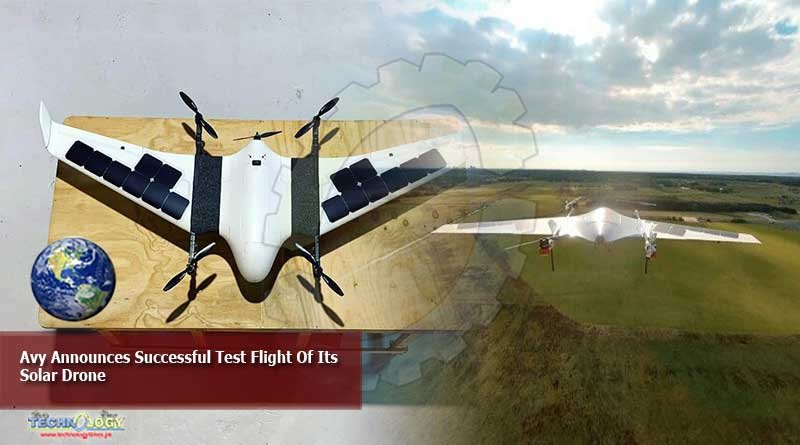Avy has announced a successful test flight of its fixed-wing drone, marking a milestone in bringing long-haul flights one step closer to being emission-free.

Avy, a Dutch solar drone manufacturer, has announced a successful test flight of its fixed-wing drone, marking a milestone in bringing long-haul flights one step closer to being emission-free. The drone is equipped with custom solar foil developed by Wattlab to reflect and absorb more sunlight, and is designed to be used for urgent medical transport, support emergency services and nature conservation initiatives.
The fast-growing ‘tech for good’ startup Avy is based in Amsterdam and has been developing emission-free drones since 2016. Avy builds fixed-wing drones, which are a combination of a drone and an airplane that takes off and lands vertically, transitioning to forward flight and therefore enabling beyond visual line of sight delivery. In the long term, Avy hopes to make an important contribution by transforming the transport and aviation sector in a sustainable way.
Now, Avy has collaborated with Wattlab, is a cleantech startup founded in 2017 and based in Rotterdam. The team hails from the Vattenfall (Nuon) Solar Team of TU Delft, a multiple winner of the World Solar Challenge in Australia, and have, in a relatively short period of time, already established themselves as the experts in customised solar energy systems.
“Our goal at Avy is to accelerate the transition towards sustainable aviation,” said Patrique Zaman, founder of Avy. “By integrating solar cells into our wings, we make use of the cleanest energy available. The Avy drone has wings and is able to transport life-saving medicines by air in Europe and Africa, as well as support first aid services in Europe. Our test flight in September with the solar prototype, showed promising results and was a first step towards a longer flight time.”
Just like previous Avy drones, the solar drone flies electrically, emission-free, fully autonomous and can take off and land vertically, also known as VTOL. The big difference with the previously developed fixed-wing drone is that the solar drone is charged by solar energy. For this technique Avy collaborated with Wattlab, who developed a strong but lightweight ‘solar skin’ that was used as the outer layer of the fibreglass wings. This way the drone generates extra energy while flying.
“The solar technology developed in this project is fully integrated into the wing shape and does not add any extra weight,” explains Bo Salet, founder of Wattlab. “The technology of the drone can serve as a stepping stone towards more sustainable developments in the aviation and transport sectors.”
The two companies will continue to collaborate for the foreseeable future to optimise the technology.
Originally published at eu
